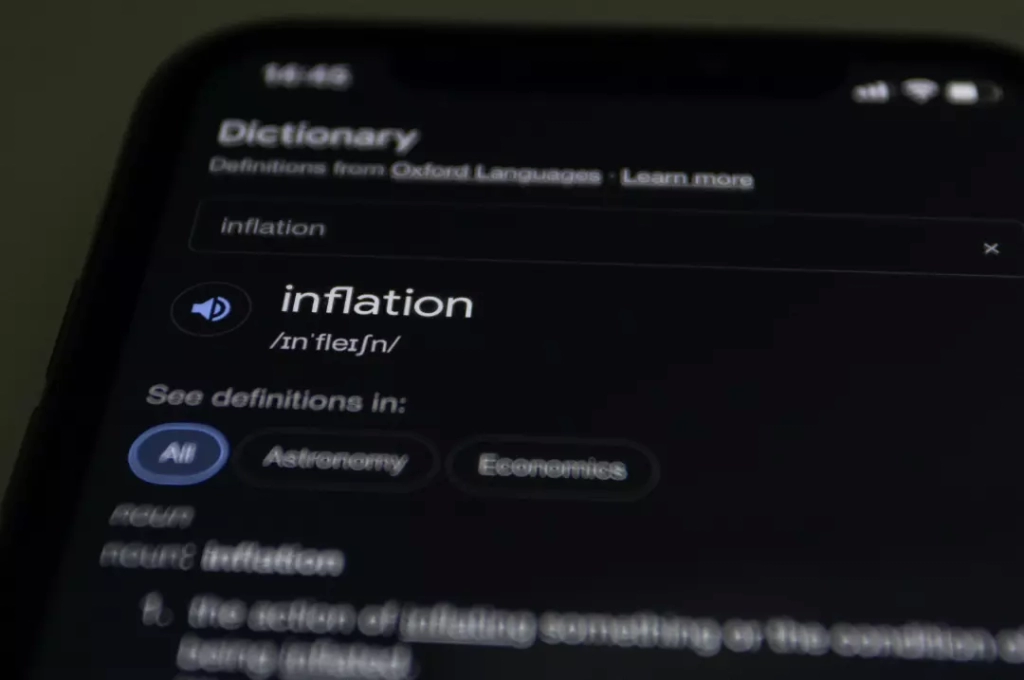How do interest rates affect inflation?
Table of Contents
ToggleUnderstanding the connection between interest rates and inflation is vital for individuals, businesses, and policymakers. It helps us make informed financial decisions and provides insights into how central banks manage economic stability.
Our focus in this blog post will be on answering the question: How do interest rates affect inflation? We will explore the interplay between these two factors and shed light on whether raising or lowering interest rates truly impacts inflation rates.
What is Inflation?
Inflation is a concept that affects the cost of living and the overall economy. To put it simply, inflation refers to the general rise in prices of goods and services over time. When inflation occurs, each unit of currency buys fewer goods and services than it did before.
Let’s break it down further. Imagine you have $100, and a year later, the prices of goods and services have increased by 2%. This means that the same basket of goods and services that cost $100 last year would now cost $102. Inflation has eroded the purchasing power of your money.
Inflation is typically measured using various indices, such as the Consumer Price Index (CPI) or the Producer Price Index (PPI). These indices track the price changes of a basket of goods and services over time, allowing economists and policymakers to monitor inflation levels.
Central banks and governments closely monitor inflation rates to maintain price stability and support sustainable economic growth. They use various tools, including interest rates, to manage inflationary pressures and ensure the economy remains balanced.
What is causing inflation in Australia?
Australia, like any other country, experiences fluctuations in inflation rates due to various factors specific to its economy.
Let’s explore some of the key drivers behind inflation in Australia:
Rising commodity prices
Australia is rich in natural resources, and fluctuations in commodity prices can have a significant impact on inflation. When commodity prices, such as iron ore, coal, or natural gas, surge in the global market, it can lead to higher export revenues and increased domestic prices.
Increased consumer spending
Consumer spending plays a crucial role in driving economic growth. When Australians have higher disposable income or access to credit, they tend to spend more on goods and services. This increased demand can put upward pressure on prices, contributing to inflation.
Changes in exchange rates
Australia’s currency, the Australian dollar (AUD), is influenced by global currency markets. If the AUD depreciates against major currencies, it can make imported goods more expensive, thus raising prices domestically and contributing to inflation.
Government fiscal policies
The decisions made by the Australian government regarding fiscal policies, such as taxation and public spending, can impact inflation. Expansionary fiscal policies, such as increased government spending or tax cuts, can boost demand in the economy and potentially lead to inflationary pressures.
Housing market dynamics
The housing market is a significant contributor to inflation in Australia. When there is strong demand for housing, property prices tend to rise, affecting the cost of living and rental prices. As housing expenses constitute a significant portion of household budgets, changes in the housing market can have a substantial impact on inflation.
Global factors
Australia’s economy is closely connected to the global economy. Events such as changes in international trade policies, geopolitical tensions, or disruptions in global supply chains can influence inflation in Australia. For instance, if there is a global increase in the prices of raw materials, it can affect input costs for Australian businesses and lead to inflationary pressures.
It’s important to note that the factors contributing to inflation in Australia are dynamic and can change over time. Economists and policymakers continuously monitor these factors to make informed decisions and implement measures to manage inflation effectively.

Does raising interest rates really lower inflation?
One commonly held belief is that raising interest rates can effectively lower inflation. However, the relationship between interest rates and inflation is more nuanced and complex than a simple cause-and-effect scenario. Let’s explore this relationship and examine whether raising interest rates truly reduces inflation.
When central banks raise interest rates, they aim to influence borrowing costs and ultimately impact spending patterns in the economy. Here are some key points to consider:
Controlling aggregate demand
Raising interest rates can act as a tool to manage aggregate demand, which refers to the total demand for goods and services in an economy. By increasing borrowing costs, central banks can discourage excessive borrowing and spending. When consumers and businesses face higher interest rates, they may become more cautious with their spending, leading to a decrease in demand for goods and services. This reduction in demand can help alleviate inflationary pressures.
Curbing excessive credit expansion
Higher interest rates can make borrowing more expensive, making it less attractive for businesses and individuals to take on debt. This can help prevent excessive credit expansion, which, if left unchecked, can fuel inflationary pressures. By raising interest rates, central banks aim to rein in credit growth, potentially reducing the risk of inflationary spirals.
Influencing inflation expectations
Expectations play a crucial role in shaping economic behaviour. When central banks raise interest rates, it sends a signal to the market that they are committed to combating inflation. This can impact inflation expectations, influencing consumer and business decisions regarding pricing, wage negotiations, and investment. By managing these expectations, central banks can indirectly contribute to controlling inflation.
Factors influencing the effectiveness of raising interest rates in reducing inflation
Economic context
The impact of interest rate hikes on inflation can vary depending on the economic circumstances. In times of low inflation or when other factors are driving inflation, raising interest rates may have limited effectiveness in curbing inflation.
Time lag
The effects of interest rate changes on the economy are not immediate. It takes time for changes in borrowing costs to influence spending patterns and overall economic activity. Therefore, the impact of interest rate hikes on inflation may not be immediate and could take several months or even years to materialise fully.
Other influences on inflation
Inflation is influenced by a range of factors beyond interest rates. Changes in commodity prices, government policies, and global economic conditions can also impact inflation levels. Raising interest rates alone may not address all the underlying causes of inflation.
Furthermore, there are potential drawbacks and risks associated with raising interest rates.
Potential drawbacks and risks associated with raising interest rates
Economic slowdown
Raising interest rates too aggressively or at inappropriate times can lead to an economic slowdown or even a recession. It can dampen consumer spending, business investment, and overall economic activity, which may have adverse effects on employment and income levels.
Debt servicing burden
Higher interest rates can increase the cost of servicing existing debt for individuals and businesses. This can put strain on borrowers, potentially leading to financial difficulties and economic instability.
Impact on asset prices
Higher interest rates can affect asset prices such as housing or shares. A significant increase in interest rates can dampen demand for these assets, potentially leading to price corrections. Such adjustments in asset prices can have spillover effects on the broader economy.

How does lowering interest rates drive up inflation?
While raising interest rates is often associated with efforts to combat inflation, the opposite scenario of lowering interest rates can also impact inflation dynamics.
Let’s explore how lowering interest rates can potentially drive up inflation.
Stimulating borrowing and spending
When central banks lower interest rates, borrowing money becomes more affordable and attractive for individuals and businesses. Lower borrowing costs can encourage increased borrowing and spending, as it becomes easier to access credit. This surge in borrowing and spending can stimulate demand for goods and services, potentially leading to an increase in prices and inflationary pressures.
Boosting investment and economic activity
Lower interest rates can incentivize businesses to pursue investment projects. With reduced borrowing costs, businesses find it more favourable to undertake capital expenditures, expand their operations, and hire more workers. This increased economic activity can generate more demand for resources, potentially pushing prices higher and contributing to inflation.
Encouraging mortgage and housing demand
Lower interest rates have a direct impact on the housing market. Reduced borrowing costs make mortgages more affordable, leading to increased demand for housing. This heightened demand can push up property prices, impacting the cost of living and contributing to inflation.
Weakening currency and imported inflation
Lower interest rates can put downward pressure on a country’s currency value. When interest rates are comparatively lower than those in other countries, investors may seek higher returns elsewhere, leading to a depreciation of the currency. A weaker currency can increase the cost of imported goods, thus raising prices domestically and potentially driving up inflation.
It’s important to consider potential risks and limitations associated with lowering interest rates.
Potential risks and limitations associated with lowering interest rates
Limiting policy tools
Central banks typically lower interest rates as a stimulative measure during economic downturns or to combat deflationary pressures. However, if interest rates are already low or near zero, central banks may face limitations in further lowering rates to stimulate economic activity. This can pose challenges in addressing inflationary pressures solely through interest rate adjustments.
Financial stability concerns
Prolonged periods of low interest rates can lead to potential risks in the financial system. Lower rates can encourage excessive borrowing and risk-taking, potentially fueling asset price bubbles or unsustainable levels of debt. These factors can undermine financial stability and create challenges for the economy in the long run.
Impact on savings and income
Lower interest rates can negatively affect savers who rely on interest income from their savings accounts or fixed-income investments. This can impact individuals’ disposable income and spending patterns, potentially influencing overall economic activity and inflation.
Is there a better way to tackle inflation than raising interest rates?
While raising interest rates is a common tool used to address inflation, there are alternative strategies and approaches that can be considered.
Let’s explore some potential options that policymakers can employ to tackle inflation effectively.
Fiscal policies
Governments can use fiscal policies, such as taxation and public spending, to manage inflation. By implementing contractionary fiscal measures, such as reducing government spending or increasing taxes, policymakers can reduce aggregate demand in the economy and potentially curb inflation. Conversely, expansionary fiscal policies, involving increased government spending or tax cuts, can be employed during times of deflation or sluggish economic growth to stimulate demand.
Supply-side reforms
Supply-side reforms focus on improving productivity, efficiency, and competitiveness in the economy. By reducing barriers to entry, encouraging innovation, and investing in infrastructure, policymakers can boost the supply of goods and services. A more efficient and competitive economy can help moderate price pressures and limit the extent of inflationary impacts.
Targeted interventions
Policymakers can employ targeted interventions to address specific factors contributing to inflation. For example, if inflation is primarily driven by soaring energy prices, policymakers can consider measures to promote energy efficiency, diversify energy sources, or negotiate better terms in energy contracts. These targeted interventions can help alleviate inflationary pressures without relying solely on interest rate adjustments.
Inflation-targeting frameworks
Many central banks adopt inflation-targeting frameworks as a means to manage inflation. In these frameworks, central banks set a specific inflation target and adjust monetary policies accordingly. By focusing on maintaining price stability within the target range, central banks aim to influence inflation expectations and guide economic actors’ behaviour. This approach provides transparency and predictability, allowing businesses and individuals to plan accordingly.
Forward guidance
Central banks can utilise forward guidance to communicate their policy intentions and influence market expectations. By providing clear and consistent messages about their inflation goals and policy stances, central banks can shape market behaviour and contribute to the control of inflation. Forward guidance can help anchor inflation expectations and reduce uncertainty regarding future monetary policy decisions.

By staying informed and understanding the complexities of interest rates and inflation, individuals and businesses can make informed financial decisions. Economic stability and prudent policy measures are vital in promoting a healthy economy that benefits everyone.
As we continue to navigate the ever-changing economic landscape, it is essential to keep a close eye on the interplay between interest rates and inflation, as well as the evolving strategies employed by central banks and policymakers to manage these factors. Stay informed, explore further, and adapt to the dynamic economic environment for a prosperous future.









